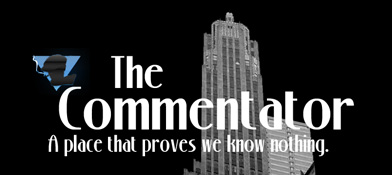Featured in ARQ Magazine - August 2006
For a few years now I've been observing a strange happening in Montreal. While walking or driving around this magnificent art-deco city, it's easy to remain captivated by the city's landmarks. It keeps us romantically drawn to another era. However, remaining stuck in the past can sometimes blind us to what is transpiring in the present. As citizens we don't ask any questions, as we are not connecting what once was to what presently is. I often ask myself whenever I pay close attention to the craftsmanship on a building, "Why we can't build like this anymore?"
It's a simple exercise really. Just look, for example, at the Centre D'Histoire (The Old Number One Fire station) in Old Montreal and compare it to anything going up now. My favorite target is the concept of the min-mall springing up everywhere. These impersonal and menacing gargoyles are popping up like dandelions all across the suburbs and it's caused me to ponder the state of architecture in the city. It is evident that we have lost our architectural soul.
Thankfully, architects are aware of what is going on. "For starters, architects should constantly be asking how they can improve the world that surrounds them. We think we're asking the right questions but we're really not," was how one Montreal architect put it.
What is preventing them from thinking along these lines? "We are mired in a post-modern quagmire in Montreal. The age we live in demands that economics and profitability prevail above all considerations. In this way, it is hard to ask the right questions when it comes to imagining a project. It detracts us from progressing," a professor of architecture at the University of Montreal added.
The age we live in can be characterized as one that puts a premium on convenience. These new one-stop mini-towns feel as though they are fabricated on a Hollywood set. It does not matter if it does not invite us to stop and enjoy the architecture over coffee. What matters are that it meets the demands of a fast paced consumer society. I know, this has been said before but it does merit repeating. We, the citizens, must shoulder part of the blame. It's not always about low prices. If it is, may God have mercy on our cultural virtues.
Computers have made our lives more efficient and in some cases quite creative. But how much reliance should be placed on the marvels of the technology age? "Today, thanks to technology, awards go to the person with the most aesthetically pleasing presentation even though it may not have any deep architectural value. We can't distinguish between what is bad and good design anymore. Contemporary students don't need to sit and think in abstract terms," was how a student I questioned put it. This sounds very much like the state of politics and writing, doesn't it?
German romantic thinkers referred to the intellectual spirit of an era as the zeitgeist. If it is any indication of the zeitgeist, then we are witnessing a Dark Age unfold before our eyes. If Filippo Bruneleschi were alive today he would further comment that the spirit of the Renaissance is dead. Once upon a time, the great minds of society went to look for patrons to support them; usually with brilliant results. Today, money is thrown at the minds that exploit the worse excesses of our sensibilities.
For all intents and purposes, architects are artists and artists traditionally have been ahead of the cultural, if not social, curve. However, in the glittering information (or misinformation depending on how you look at things) age, we see that in many facets of pop culture too often the spoils of rewards go to the ones who happen to be coincidental indicators of a culture - to borrow an economic term. They merely reflect the age they live in.
Can we change the tide? "It will be difficult. So many cultural variables come to play. For instance, in order to design and implement an innovative structure we need the full support of the men and women who will be building the structure. Often, they are to set in their ways to undertake such a project."
Is it the same elsewhere? Whenever I visit Europe or the United States, impressed upon my visual senses is the fact that architecture in these places remains vibrant. Again, I asked the people who know, "Europe has a cultural heritage that is accustomed to being open minded to new ideas. The United States, for its part, has spearheaded some architectural movements, as was the case with Frank Lloyd Wright that keeps them from being fearful of innovation. Canada, Quebec in particular, maintains a parochial if not colonial outlook. It has less to do with talent because the talent is available. It's more a question of vision and will." Our once proud joie de vivre is nothing but a distant memory now.
Before closing this piece I went for a drive. I visited a mini-mall nearby. Along the way, I thought about Notre-Dame Basilica, the financial district on St.James St. and several other buildings in and around the city of Montreal. It was not uncommon for some of these landmarks to add gargoyles to keep bad spirits away. The mini-mall is a gargoyle on the landscape. Only it's keeping the wrong sprits away. Will there be a rediscovery of architectural eminence? View this is as a call to architectural arms.

No comments:
Post a Comment
Mysterious and anonymous comments as well as those laced with cyanide and ad hominen attacks will be deleted. Thank you for your attention, chumps.